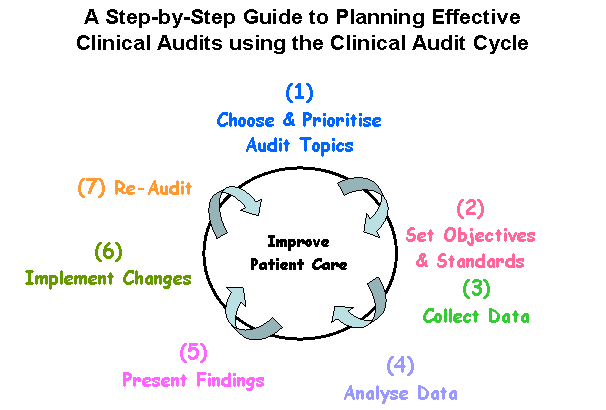Clinical Audit
Seriously, I do not have the slightest idea on the topic called clinical audit when I first attended the lecture two weeks ago. As usual, paying attention on what Dr. Adi Utarini says in lecture about the introduction to clinical audit practical session is crucial in the understanding of clinical audit. The lectures were brief and easy to understand and finally after attending the lecture I walked out the hall with a glimpse of some ideas about what clinical audit is.
At first, I thought clinical audit is about financial auditing or accountancy in clinical settings in the hospital but I was wrong after attending the lecture by Dr. Adi Utarini. Thus, I would like to clarify the term clinical audit first by defining the meaning of audit. Audit is an evaluation of a person, organization, system, process, enterprise, project, or product. The term commonly refers to audits in accounting, but similar concepts also exist in project management, quality management, and energy conservation.
Another term that caught my attention while reading more about audit is the term quality audit. Quality audits are performed to verify conformance to standards through review of objective evidence. A system of quality audits may verify the effectiveness of a quality management system. This is part of certifications such as ISO 9001. Quality audits are essential to verify the existence of objective evidence showing conformance to required processes, to assess how successfully processes have been implemented, for judging the effectiveness of achieving any defined target levels, providing evidence concerning reduction and elimination of problem areas and are a hands-on management tool for achieving continual improvement in an organization.
To benefit the organization, quality auditing should not only report non-conformances and corrective actions but also highlight areas of good practice and provide evidence of conformance. In this way, other departments may share information and amend their working practices as a result, also enhancing continual improvement.
As for clinical audit, the term is defined as a quality improvement process that seeks to improve patient care and outcomes through systematic review of care against explicit criteria and the review of change. Aspects of the structure, process and outcome of care are selected and systematically evaluated against explicit criteria. Where indicated changes are implemented at an individual, team, or service level and further monitoring is used to confirm improvement in healthcare delivery. (UK’s National Institute for Health and Clinical Excellence, NICE)
Others, like the authors of the Cochrane Review on audit and feedback offer a narrower definition which is “The provision of any summary of clinical performance over a secified period of time. The summary may include data on processes of care, clinical endpoints, and clinical practice recommendations.”
In brief, clinical audit provides a method for systematically reflecting on and reviewing practice.
In the literature about clinical audit methods, the following terms are often mentioned: criteria based audits; adverse occurrence screening; critical incident audits; peer reviews; and case note analysis. These are used inconsistently by different authors and tend to add to the general confusion about the clinical audit process. For now, I recommend it is best to forget all this terminology since there is only one clinical audit method – the clinical audit cycle.
Lastly, the overarching aim of clinical audit is to improve service user outcomes by improving professional practice and the general quality of services delivered.
References:
· Clinical audit: a comprehensive review of the literature, Centre for Clinical Governance Research in Health, Faculty of Medicine, University of New South Wales, Sydney NSW 2052 Australia (2009)
· Lecture Notes titled Clinical Audit and Quality Tools
· Wikipedia (keyword: audit, clinical audit)


No comments:
Post a Comment